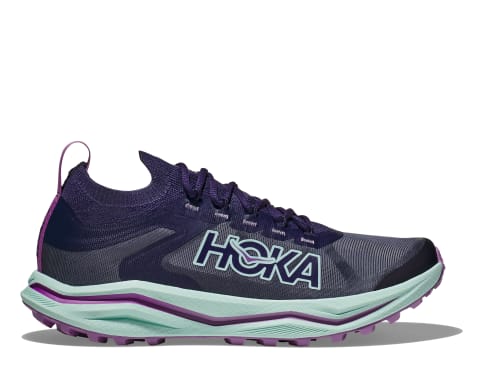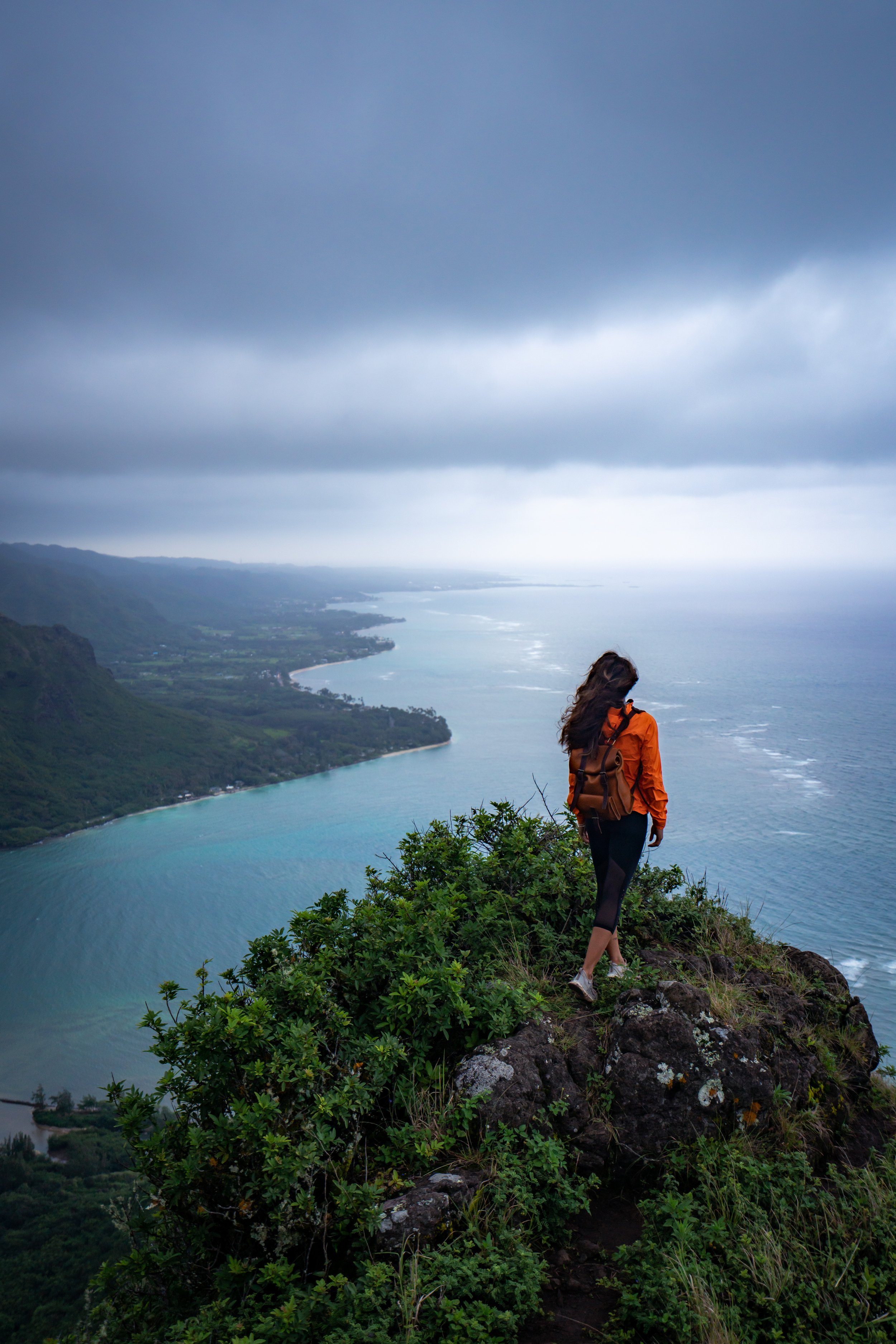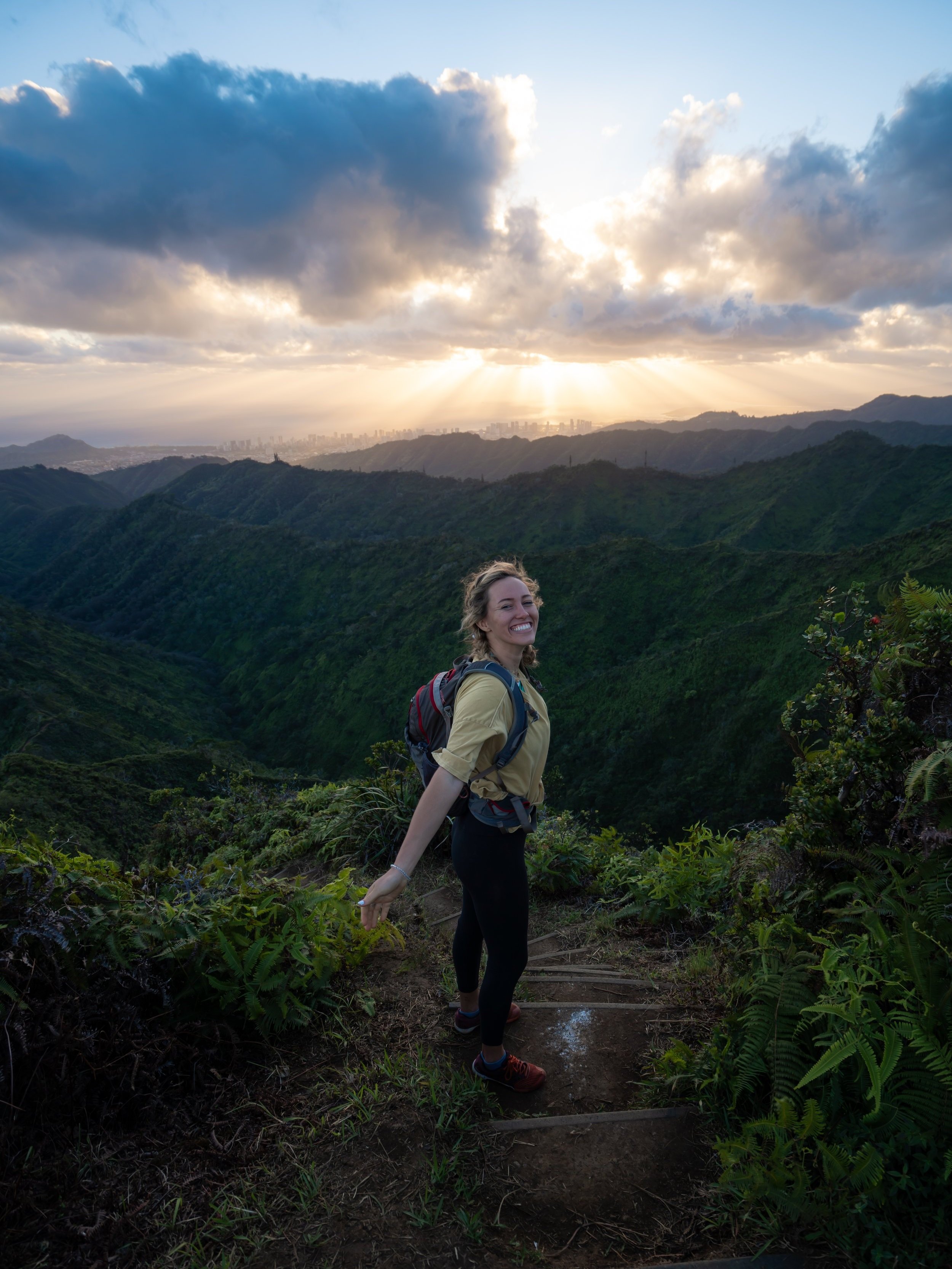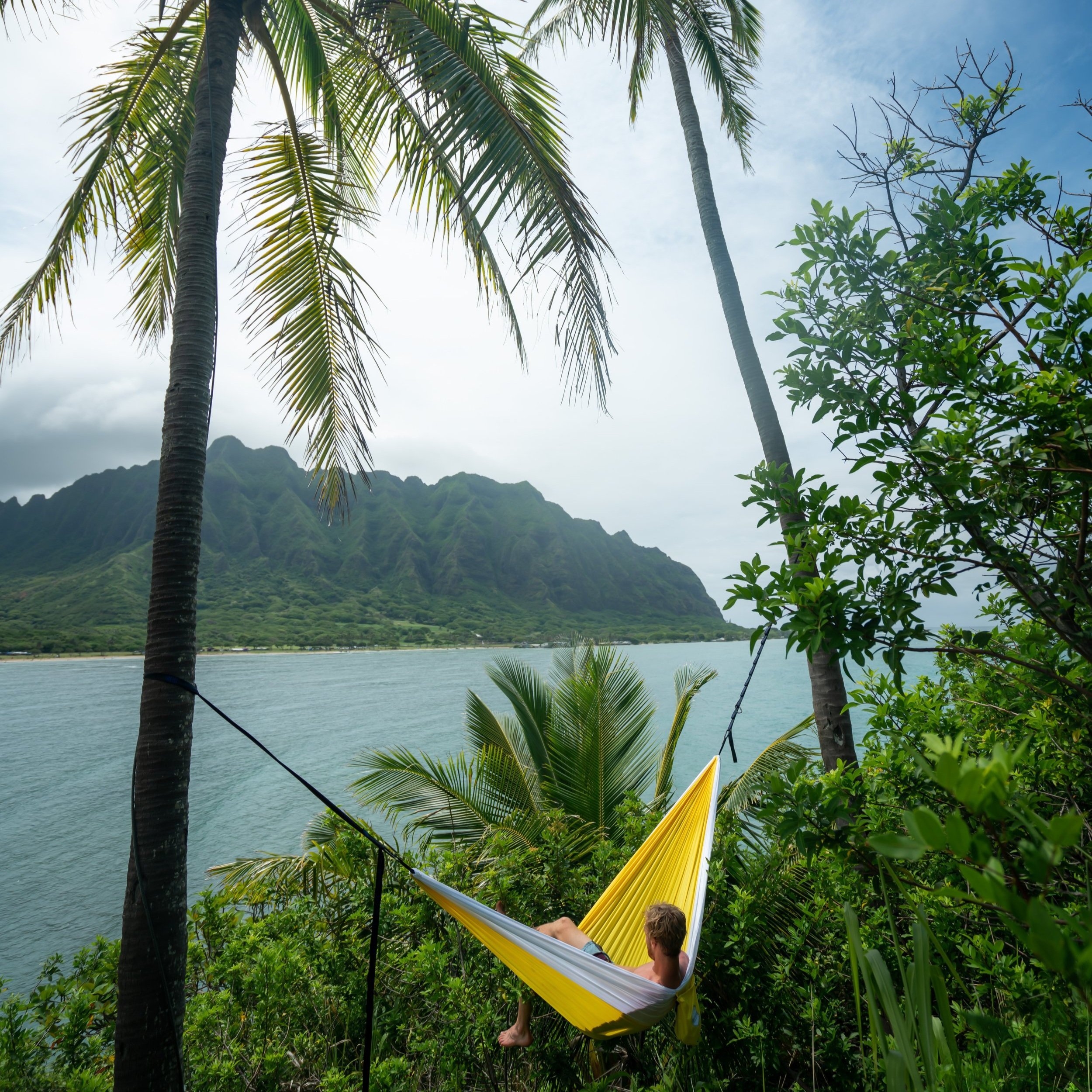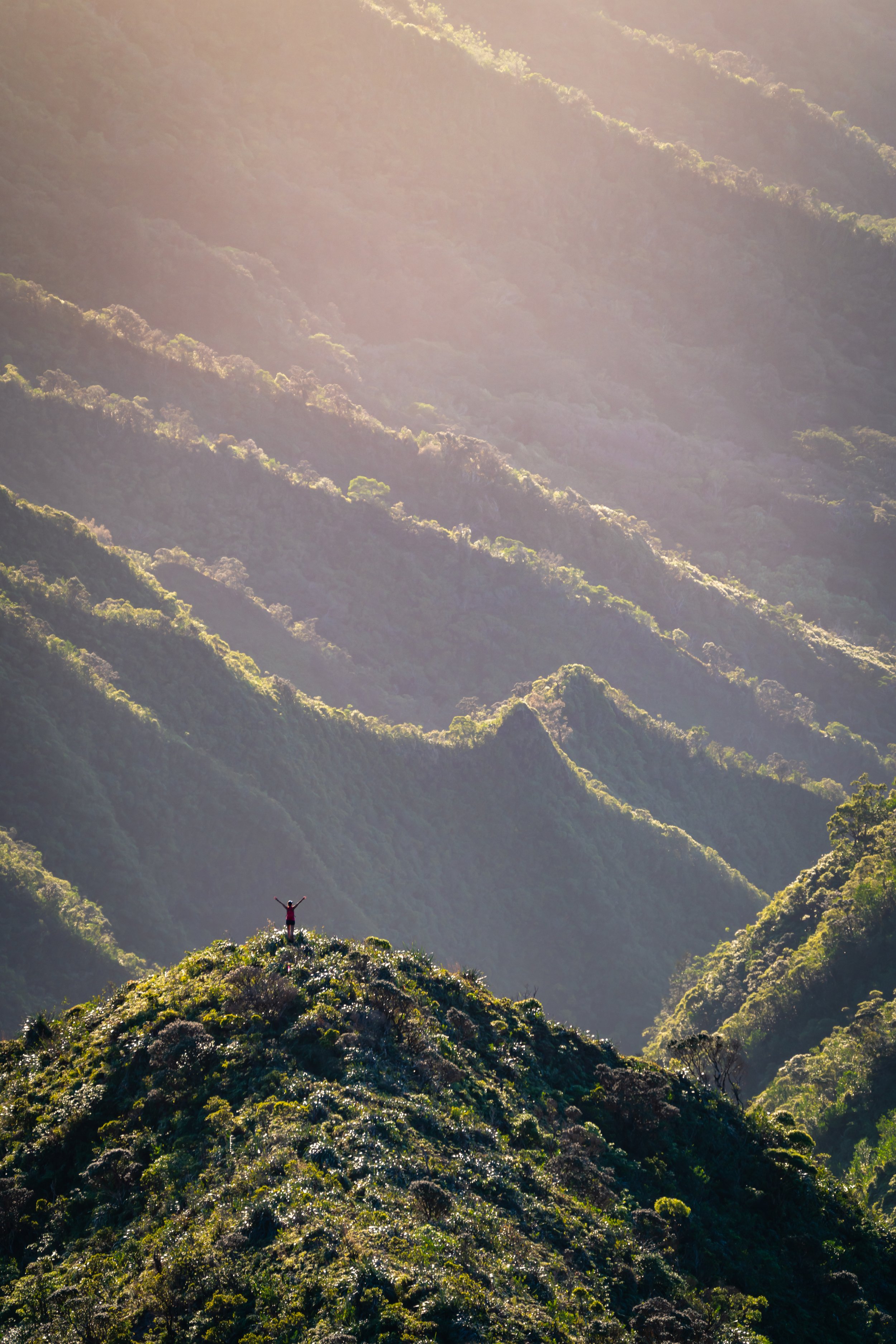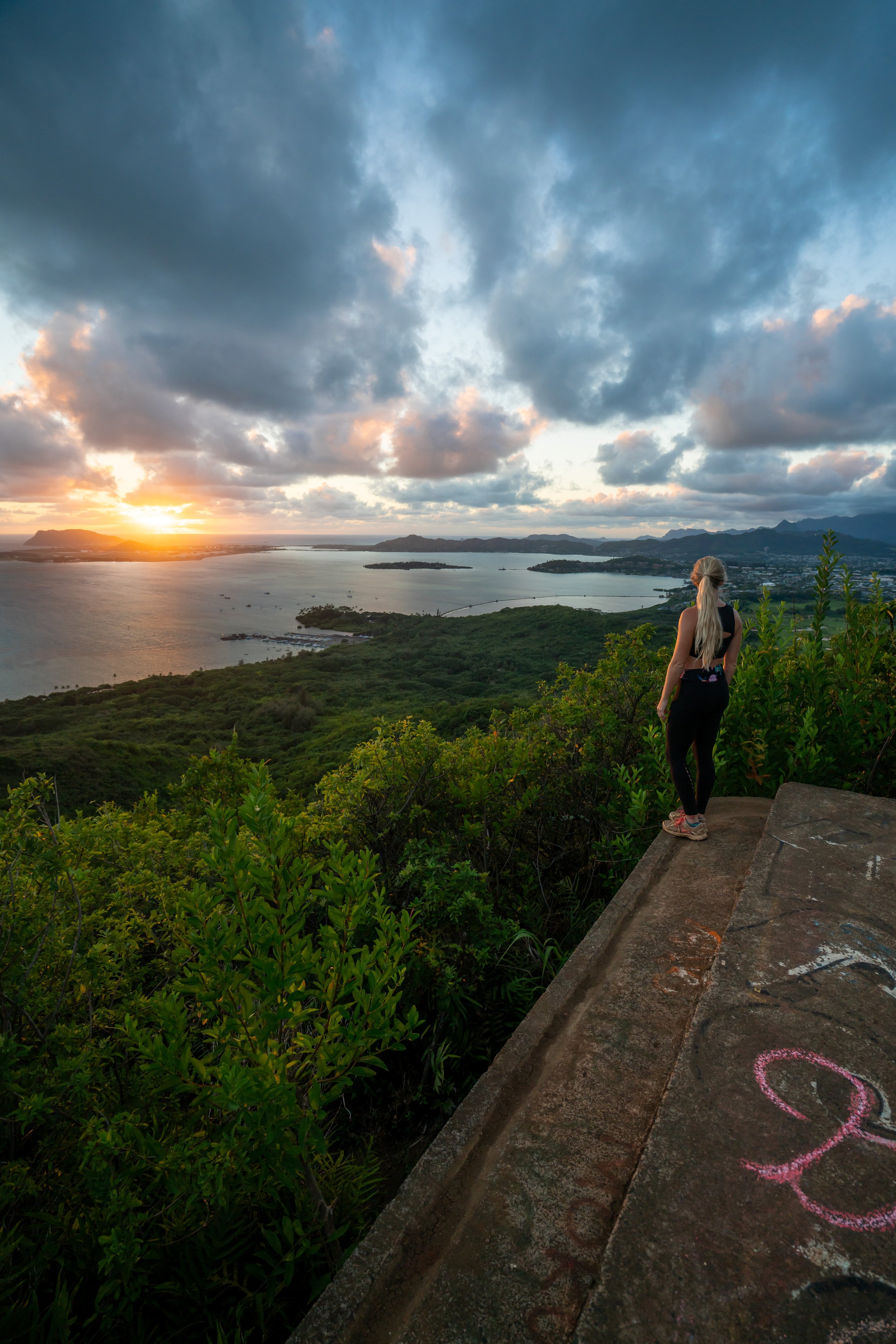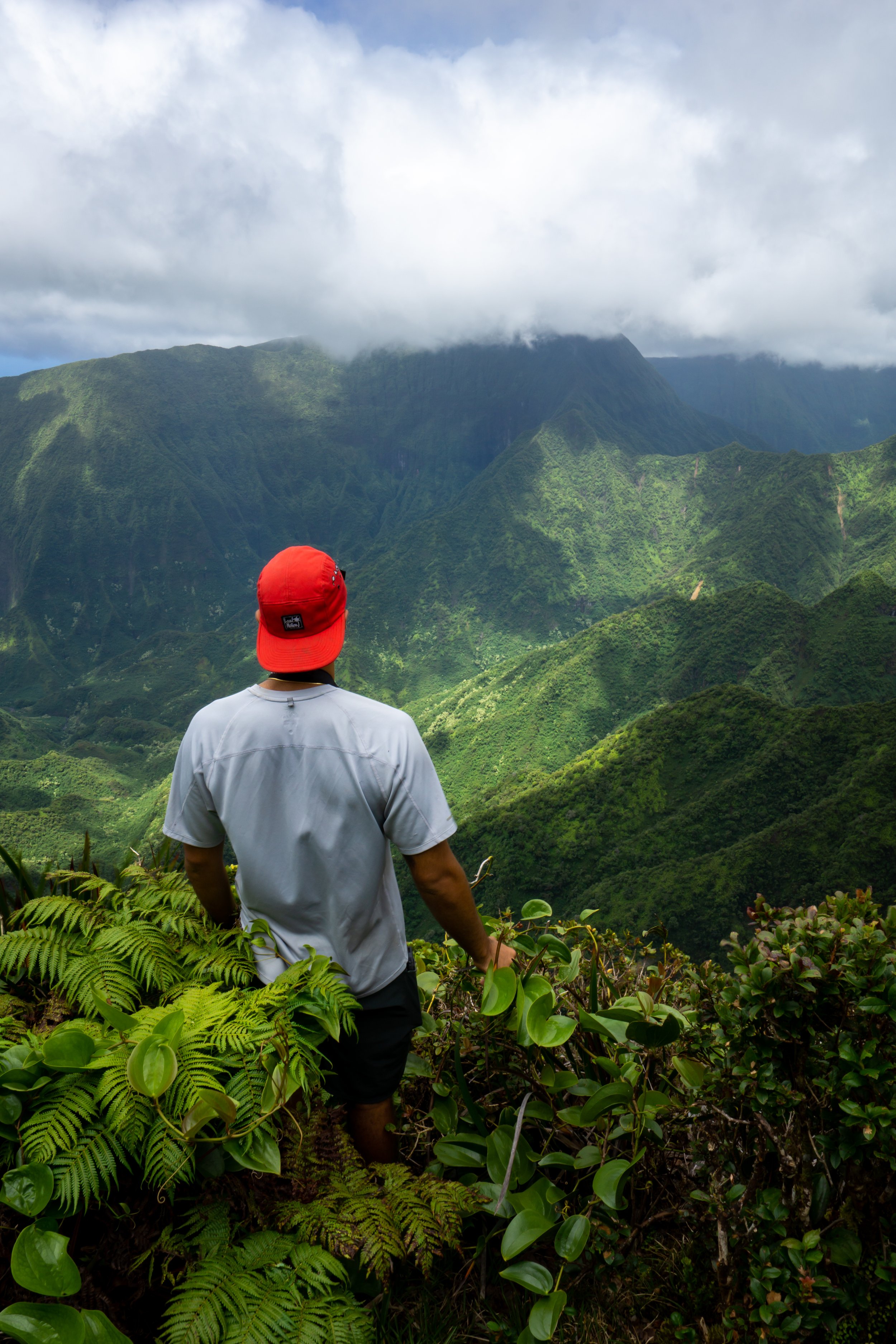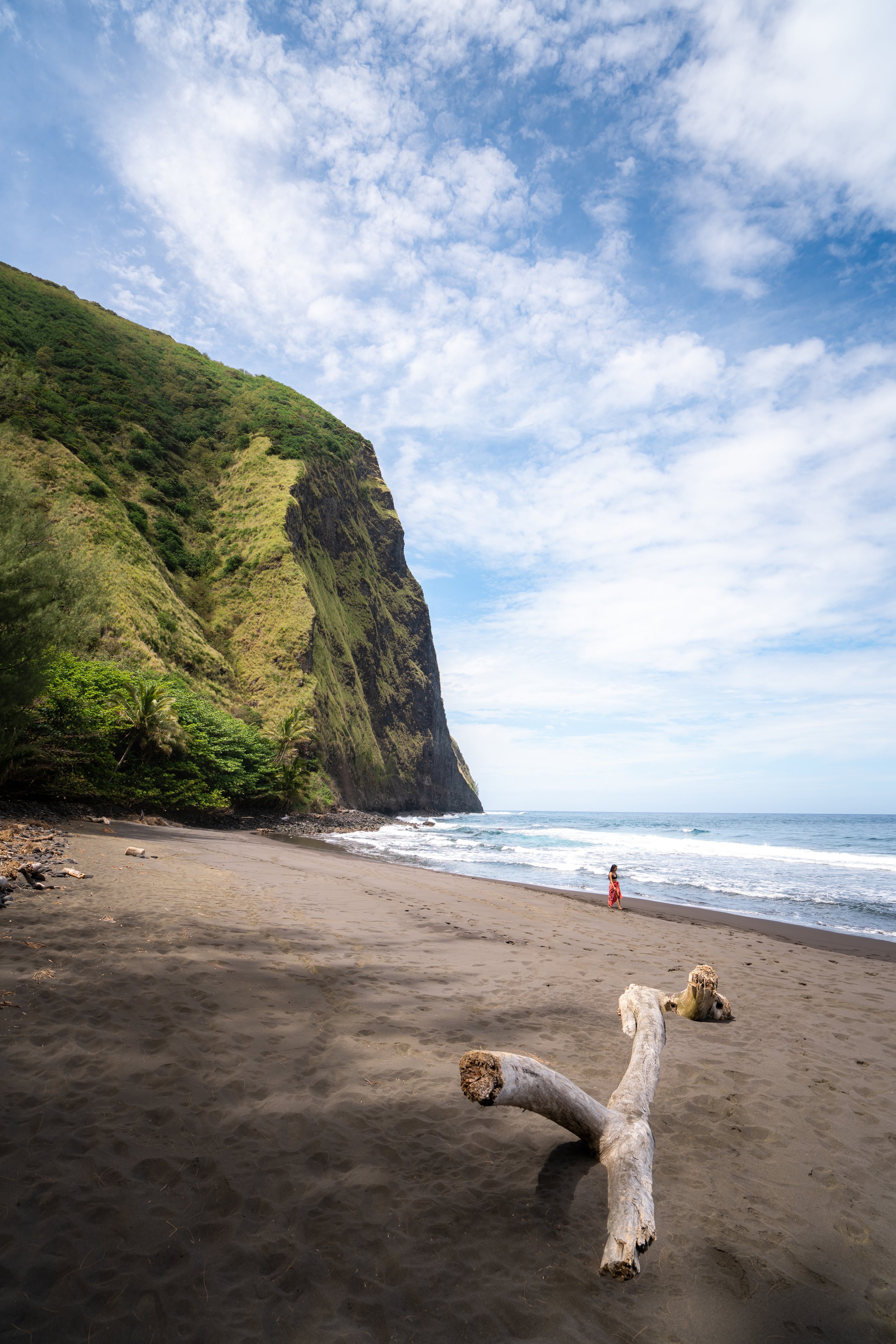Hiking Mt. Kaʻala: The Tallest Peak on Oʻahu, Hawaiʻi
Distance: 7.1 miles / 11.4 km
Elevation Gain: ~3,400 ft. / 1,036 m
The Mt. Kaʻala Trail in Waiʻanae Valley is a popular and typically sought-after adventure among those seeking to climb the tallest peak on Oʻahu.
That being said, while climbing the tallest peak might make the trail sound intimidating, Mt. Kaʻala is nowhere near the hardest hike on the island. In fact, if you would like to read about a number of trails that are all more challenging than Mt. Kaʻala, I encourage you to click the link below.
In any case, Mt. Kaʻala is truly a 'gentle giant' for what hiking to the highest point on the island could be. However, be aware that the elevation gain is nearly constant until the summit bog at the top, meaning that only those prepared for such a steep ascent should attempt Mt. Kaʻala.
Read My Separate Post: Most Challenging Trails on Oʻahu
Mt. Kaʻala Trailhead Parking
Parking for the Mt. Kaʻala Trail is located at the very end of Waiʻanae Valley Road in the dirt parking lot shown below.
Out of caution, consider the Mt. Kaʻala Trailhead to be a high-crime area for petty theft, meaning you should never leave visible bags or anything valuable in your car.
Google Maps Directions: Mt. Kaʻala Trailhead
My Hawaiʻi Hiking Checklist
Osprey 3L Water Bladder - The Osprey 3L water bladder is the most universal hiking and backpacking water bladder on the market, and it’s my go-to because of the slide-off seal that allows it to be quickly filled from the top. Additionally, individual parts are easily replaceable, such as the bite valve.
Blister / Heel Protectors - I swear by these cheap, amazing heel protectors to prevent blisters for nearly every kind of hiking and backpacking that I do!
Black Diamond Headlamp - Personally, I recommend the Black Diamond Storm because it is one of the brightest, lightest, and longest-lasting headlamps on the market—and trust me, the weight-to-battery-life ratio really does matter!
Hiking / Trail Running Shoes - Depending on the type of trail, I prefer to use either the Keen Targhee for longer, more rugged hiking or the HOKA Zinal Trail-Running Shoe for lighter, less intense trails. In either case, both have been amazing to me for many years across countless environments, and both can be found in men’s and women’s sizes. - (Men’s Keen / Women’s Keen) (Men’s HOKA / Women’s HOKA)
Waterproof Rain Shell - You never know when it may rain, and I’ve learned over the years that a rain shell is far better than a rain jacket. By this, I mean that it’s best to have something that the water will roll right off of, which is why I recommend the Patagonia Torrentshell 3L available in both men’s and women’s sizes.
High SPF Sunscreen - Packing high-SPF sunscreen is a must for long days outside!
Hiking the Mt. Kaʻala Trail
From the parking area, the Mt. Kaʻala Trail begins beyond the gates for the service road shown below.
For the first 1.4 miles (2.3 km), the Mt. Kaʻala Trail ascends about 1,000 ft. (305 m) until the true trail begins at the Waiʻanae Kai Shelter, located further in the valley.
These beginning sections of the Mt. Kaʻala Trail are a great place to see a number of native plants, like the beautiful Wiliwili trees or Pōhinahina, to name just a few.
At about 0.9 miles (1.4 km), the service road passes by the first of a few different Board of Water Supply buildings before the start of the trail.
This stretch before the second set of buildings is typically a bit muddy, but never as bad as this, as these were taken shortly after a multi-day storm with a lot of very heavy wet weather.
Waiʻanae Kai Shelter
Then, after 1.4 miles (2.3 km), the true Mt. Kaʻala Trail begins, where vehicles are prevented from driving any further.
Here, go straight at the Waiʻanae Kai Shelter to follow the trail that begins immediately after.
Lower Forest
In my opinion, these first sections through the lower forest are typically a bit more vague than the rest, but follow the most obvious path and look for the markers on the trees, which should represent the Mt. Kaʻala Trail.
Mt. Kaʻala-Kaʻala Falls Junction
Shortly after beginning the initial ridge, the Mt. Kaʻala Trail splits to the left to cross over Kūmaipō Stream, located down the trail.
That being said, if you were to miss this important turn, you will not find your way up Mt. Kaʻala, as the trail going straight is best known for being a shortcut to Kaʻala Falls.
On a side note, regardless that the ridge is the quickest route to Kaʻala Falls, know that it is also incredibly confusing if you don’t have any prior knowledge, meaning the most straightforward way to hike Kaʻala Falls is actually by following the stream, located shortly ahead.
Kūmaipō Stream
After the split, the Mt. Kaʻala Trail crosses over Kūmaipō Stream—the one and only stream crossing on the entire hike, which is almost always dry unless it has been particularly wet recently.
Furthermore, while I said that hiking to Kaʻala Falls is more straightforward by following the stream, it is also much more difficult and dangerous than the ridge, making neither route more or less ideal than the other.
After the stream, the Mt. Kaʻala Trail begins ascending on the far side.
Mt. Kaʻala-Tiki Ridge Junction
At about 1.9 miles (3.1 km), the Mt. Kaʻala Trail splits once more with Tiki Ridge, which is often regarded as the best trail up to the Saddle in order to reach Puʻu Kawiwi.
That being said, go right to stay on the Mt. Kaʻala Trail, or you will likely add about 30 minutes onto your adventure if you end up ascending Tiki Ridge instead of the Mt. Kaʻala Trail.
After the Tiki Ridge split, the trail begins the steep ascent up the ridge to the Kaʻala Saddle.
When the Mt. Kaʻala Trail begins this ascent, know there are very few places along this stretch to get a break from the constant elevation gain.
To put it in perspective, the ascent begins at about 1,900 ft. (579 m), making the total climb just over 2,100 ft. (640 m) from this point to the summit.
For those paying attention, this ascent is also where the Mt. Kaʻala Trail makes the biggest transition from a predominantly non-native/ invasive forest to a native forest that continues to become more and more pristine the higher you hike.
Kaʻala Saddle
Then, at about 2,700 ft. (823 m), the steep climb through the lower forest abruptly comes to an end when Mt. Kaʻala Trail reaches the Kaʻala Saddle.
At this junction, go right to continue toward the summit of Mt. Kaʻala.
As the trail follows the fence line, the hike continues to climb, but not as steep as the ridge leading up to the Saddle.
However, this slightly more gradual pace will soon come to an end at once at the scrambling sections, located further up the mountain.
Mt. Kaʻala Ladder
At roughly halfway between the Saddle junction and the summit bog, the Mt. Kaʻala Trail climbs through a few steep boulder sections.
However, I think it’s worth noting that the ladder installed today is more of a 'recent' luxury, meaning hikers of years past had to find their own way up this steep section.
This is the top of the ladder looking down.
If you’re wondering, these shoes are a pair of light trail runners that I sometimes prefer to use on less-overgrown hikes, such as Mt. Kaʻala.
Past the ladder, the Mt. Kaʻala Trail climbs a number of steep sections, as the trail typically gets wetter and wetter the closer you get toward the bog.
Mt. Kaʻala Summit Bog
When the trail finally levels out, you have reached the famous Mt. Kaʻala summit bog.
That being said, the Mt. Kaʻala summit bog is one of the most pristine native forests in Hawaiʻi, with many rare and endangered species being found right along the trail.
Therefore, I kindly ask that you do everything you can to minimize your impact in this fragile environment, as some of the rarest plant and animal species in the world call this place home!
To further this point, Mt. Kaʻala is not only home to native species that can only be found on Oʻahu or in the Waiʻanae Mountains, but also species that only exist on the Mt. Kaʻala, making the bog one of most critical habitats amongst a host of non-native threats found elsewhere.
Please be sure to close the ungulate-exclusion fence after entering.
Shortly after entering the bog, the Mt. Kaʻala Trail follows a series of boardwalks to the far side of the summit, where the trail ends at Mt. Kaʻala Road.
Again, please be sure to lock the gate behind you.
Mt. Kaʻala
According to the Hawaiʻi Department of Land and Natural Resources, the summit of Mt. Kaʻala is 4,025 ft (1,227 m), making it the highest point on Oʻahu, and the only summit over 4,000 ft. (1,219 m).
All said, the fences and communication equipment that you can see at the summit is an active military installation, which is why I advise turning back once you reach Kaʻala Road.
Native Plants on the Mt. Kaʻala Trail
As previously mentioned, Mt. Kaʻala is one of the most pristine native forests on the island, meaning, for obvious reasons, it is also one of the best hikes on Oʻahu to see and learn about a variety of native plants across all elevations of the hike.
To name a few, you can expect to find Lapalapa, ʻŌhiʻa lehua, Koliʻi, Kāpana, Kōpiko, Māmaki, Kāmakahala, Kanawao, Wiliwili, Maile, multiple Kōlea species, and honestly, too many more to list here.
Furthermore, if you are curious about trying the native Hawaiian Māmaki tea, I kindly ask that you don’t harvest Māmaki from our native forests but, instead, buy from one of the local reputable vendors, such as those listed below.
All said, if you’re interested in learning more about these and other native Hawaiian plants from across the islands, I encourage you to read more in my separate article linked below.
Read My Separate Post: Native Hawaiian Plant Guide
More Oʻahu Adventures
If you’re interested in reading about some more amazing Oʻahu adventures, check out my separate posts below!
Best Hotels & Restaurants in Waikīkī
If you’re trying to decided where to stay on Oʻahu, check out my top 10 list for the best resorts and restaurants in Waikīkī.
I break down what makes one hotel a better choice over another, so that you can find the best fit for your stay on the island.
Read My Separate Post: Best Waikīkī Hotels & Restaurants
HNL Airport-Hotel Shuttle
Prices on ride-share apps like Uber/ Lyft cannot beat the price of booking your hotel shuttle prior to arrival. I say this because there are additional fees for ride-share airport pick-ups at Honolulu Airport (HNL), which is why I recommend booking your transportation in advance using the options below.
Additionally, the last option below will go as far as the Ko ʻOlina Resorts on the West Side and Turtle Bay on Oʻahu’s North Shore!
Best Way to Book Rental Cars!
I travel quite a bit, and I know firsthand that finding a good rental car deal can be a challenge, but that’s why I recommend comparing all of your options with Discover Cars.
In short, Discover Cars is a well-known, reputable business that allows you to search for the best deal across companies, and they have the best full-refund cancellation policy I’ve ever seen, valid up to 72, or sometimes even 48, hours prior to your reservation!
Book Here: Discover Cars
Visiting Other Islands
If you are visiting Oʻahu or heading to another island, check out some of my personal recommendations for Oʻahu, Maui, Kauaʻi, Molokai, Lānaʻi, and Hawaiʻi Island (Big Island) in these separate posts.
If you’re trying to decide which island is right for your visit, check out my overview about each island in the post below.
Read My Separate Post: What is the Best Hawaiian Island to Visit?
What is the Best Time of Year to Visit Hawaiʻi?
The weather in Hawaiʻi can often appear to be warm and beautiful throughout the year, but in my experience, there is a lot more to consider when planning what time of year to visit the islands, such as what island you are considering, what sides of each island do you plan to stay, what activities are you most interested in, the wildlife, and countless other nuanced variables that can all impact the type of trip you can expect to have.
For these reasons, I highly recommend reading through my separate article to not only understand my thoughts regarding the best time of year to come to Hawaiʻi but also what you need to consider based on the time of year that you plan to visit.
Read My Separate Post: What is the Best Time of Year to Visit Hawaiʻi?
10 Best Tours & Excursions on Oʻahu
There are a lot of different tour options to choose from on Oʻahu, but to make it easier to decide, I made a list of my favorite tours because some things simply are better with a local guide!
Read My Separate Post: Best Tours on Oʻahu
Safety
All hikes in Hawaiʻi should not be compared to trails outside of the islands, and hikers should exercise due caution on every adventure, given that many are extremely dangerous.
By this, I mean that Hawaiʻi is known for hot, humid weather, steep, dramatic, and unstable cliffs, and flash floods, which can occur without warning. Therefore, it is important that you check the local forecast, understand the physical condition of your entire group, and pack sufficient food and water before attempting any adventure.
Disclaimer
All information provided on this blog is for informational purposes only and is not intended to be a substitute for information or advice from qualified professionals or managing agencies.
Noah Lang Photography LLC makes no representations or warranties regarding the accuracy or completeness of the information provided here, and readers should use their own discretion, judgement, and seek professional advice where it is appropriate.
Furthermore, Noah Lang Photography LLC shall not be held responsible for any injuries, lost individuals, or legal issues arising from the use of information provided on this website, and if applicable, the above safety disclaimer should be referenced to provide a generic overview of the risks involved.
All said, the content on this blog is for the sole use of Noah Lang Photography LLC, and unauthorized use or reproduction of this content is strictly prohibited.
Disclosure
This post is not sponsored.
However, some of the links in this post are affiliate links, which means that I may earn a small commission if a purchase is made through one of those links. This commission comes at no additional cost to you, and I only recommend products that I personally use and believe will add value to my readers. Thank you for your support, which enables me to continue creating more!
To read the full privacy policy, click here.

About This Blog
Noah Lang Photography, also known as @noahawaii, is 100% reader-supported!
I do not accept guest articles or sponsored content of any kind on my blog, which is why, if you enjoy the outdoor and travel content I create, please consider buying me a coffee!
I appreciate your support, which helps me continue to keep this blog alive!












